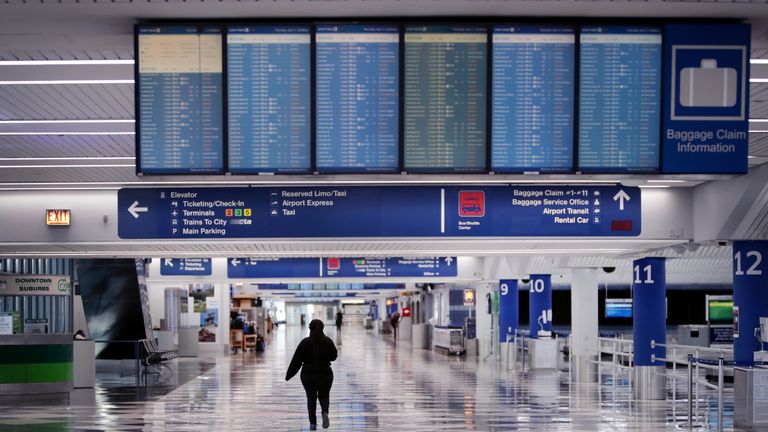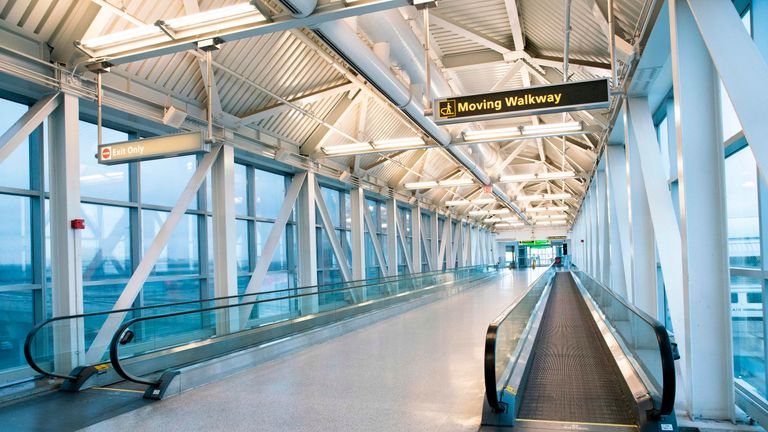Coronavirus: Pandemic has set the number of air travellers back decades
At the start of March, passenger numbers remained the same as the year before, but saw a sharp decline a week later.
Friday 10 April 2020 15:57, UK
The number of people travelling through US airports this week has fallen to levels not seen since the 1950s, due to the coronavirus lockdown restrictions.
A total of 97,130 people passed through security checkpoints in US airports on Tuesday, according to figures released by the Transportation Security Administration.
This represents a fall of 95% on a year ago, with people deciding not to travel while the coronavirus pandemic takes hold in the country.
However, this number could be lower, as retail workers and airport staff will also pass through official checkpoints.
According to data from trade group Airlines for America, the last time the country averaged 97,000 passengers was 1954 and that number has risen every year since.
In the few days after the September 11 terror attacks, commercial flying in the US was halted, and people were slow to get back on planes - but it is believed the period of low numbers could last longer during the COVID-19 outbreak.
According to polling company Public Opinion Strategies, less than 50% of Americans said they would get on a plane in the sixth months following the flattening of the virus curve in the US.
The drop in passenger numbers has come suddenly. On 1 March, around 2.3 million people passed through security checkpoints at US airports - almost identical numbers to the same time last year.
The second week of March saw the start of the rapid decline and only slowed in the last few days.
::Listen to Divided States on , , , and
Airlines around the world have responded to the dramatic fall in passenger numbers by slashing services - but many planes are still flying empty.
United Airlines has said it is losing around $100m (£80m) a day, while Delta says its losses amount to $60m (£48m) each day.
Most of the major airlines have applied for federal support in an effort to kick-start the industry when the pandemic is over.
In the UK, the rapid decline in passenger numbers as a result of travel restrictions and government advice has meant that many airlines, including easyJet, have grounded their entire fleet, and a number of airports have been closed completely.





